The University of Saskatchewan and Global Water Future researchers released the wastewater data for Saskatchewan, showing another increase of the COVID-19 viral load in Saskatoon, North Battleford, and Prince Albert.

As of Sept. 9, Saskatoon saw an average increase in the RNA load by 39.9 per cent.
The report said this is larger than the 10-week average recorded in the city, and is the fourth highest value observed during the pandemic.
Some 25.5 per cent of the RNA load is being attributed to the BA.2.12.1 variant, while 24.8 per cent is recorded as other BA.2 variants, and 49.7 per cent is attributed to BA.5, which saw an increase of 2.1 per cent.
The average wastewater virus load found in North Battleford almost doubled, as it saw a 96.6 per cent increase up to the Sept. 2 reporting period.

Get weekly health news
It was noted this viral load was considered large by the report, and that this was tied for the fifth highest concentration observed during the pandemic.
The proportion of the RNA load attributed to BA.5 in North Battleford also jumped, which saw a 26.6 per cent increase, making up 51.2 per cent of the RNA load recorded.
Some 23.3 per cent was made up of the BA.2.12.1 variant, and 25.5 per cent was attributed to other BA.2 variants.
Prince Albert also saw an increase in its RNA load numbers up to Sept. 5.
There was an average increase of 74.1 per cent reported, and it was noted that this was larger than the 10-week average, and this concentration was tied for the fourth highest value observed during the pandemic.
The majority of the RNA load recorded is being attributed to other BA.2 variants, making up 72.2 per cent.
Some 22.3 per cent is being attributed to BA.2.12.1, and BA.5 made up the remaining 5.6 per cent.

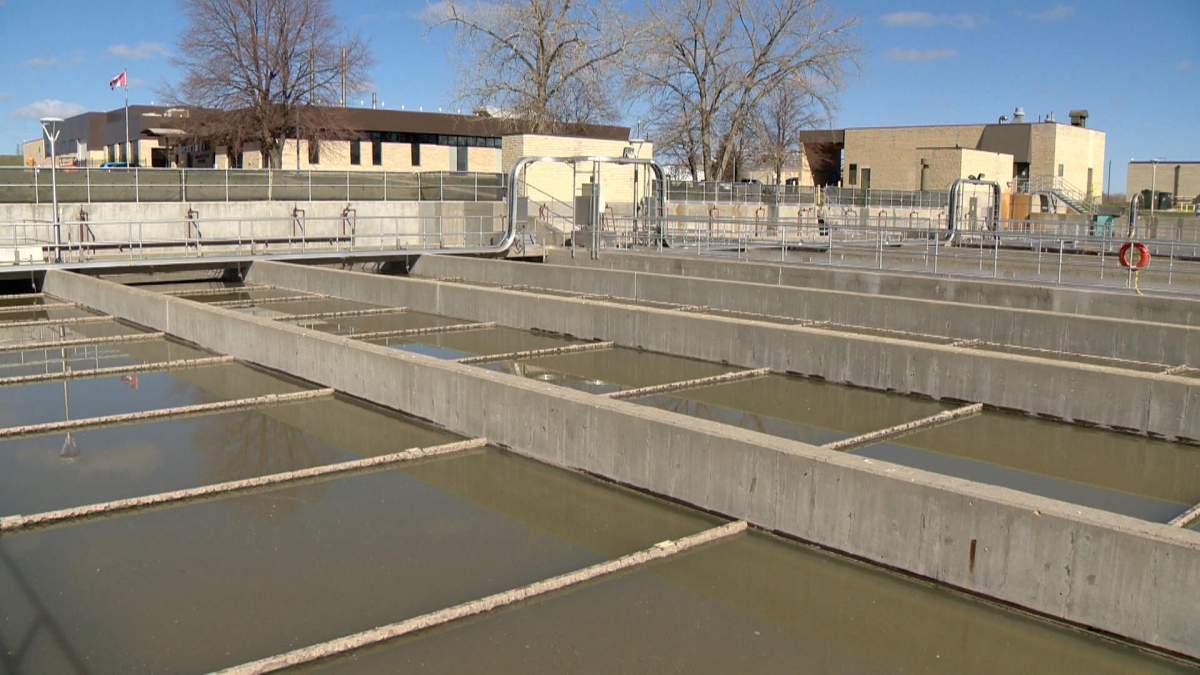
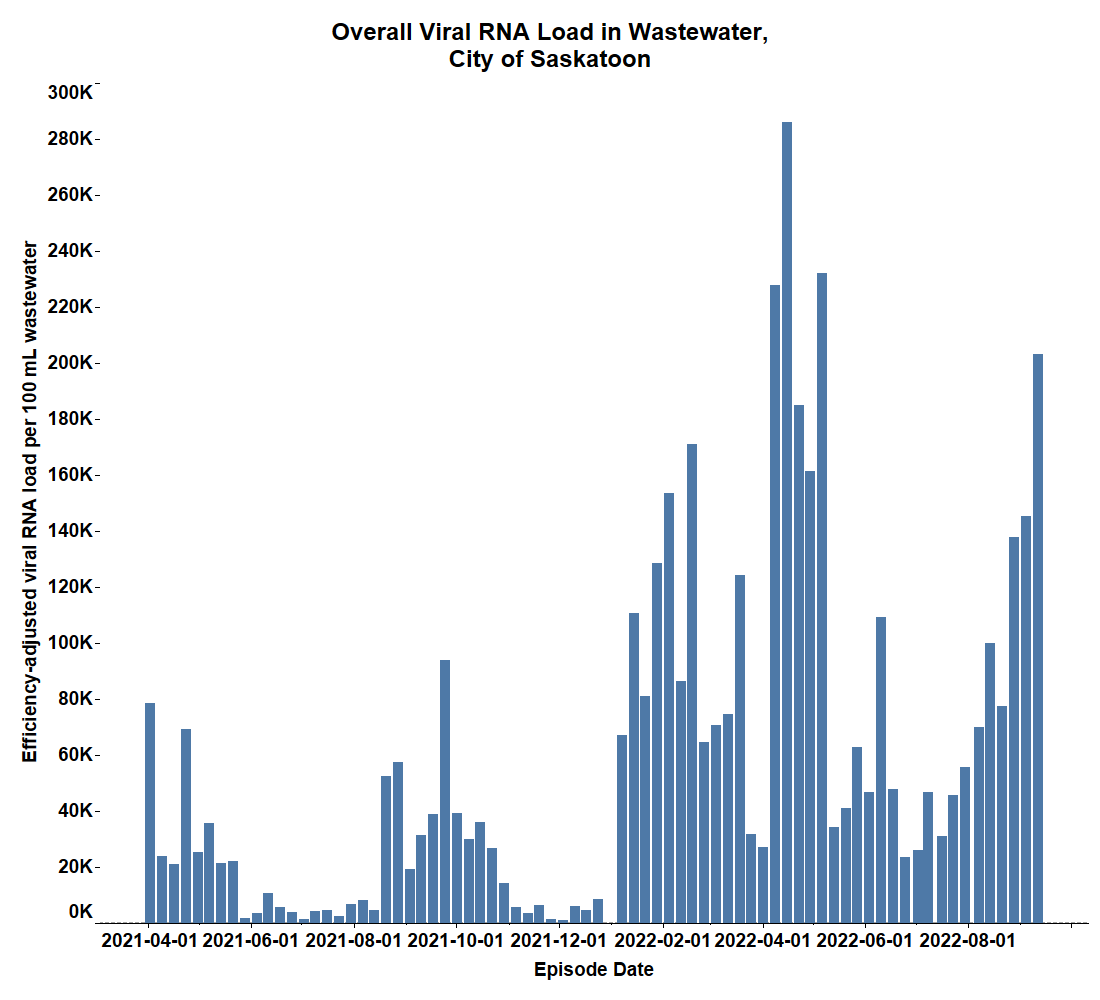
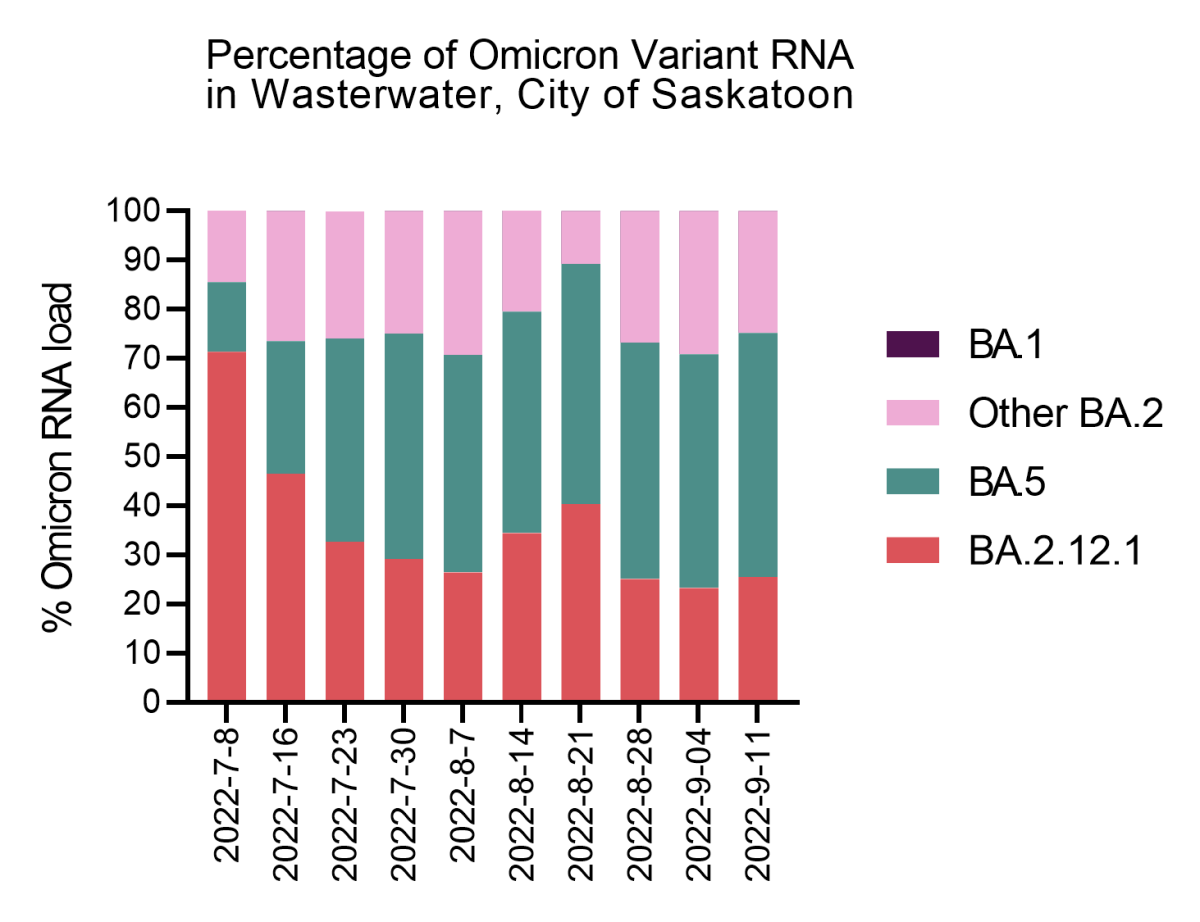

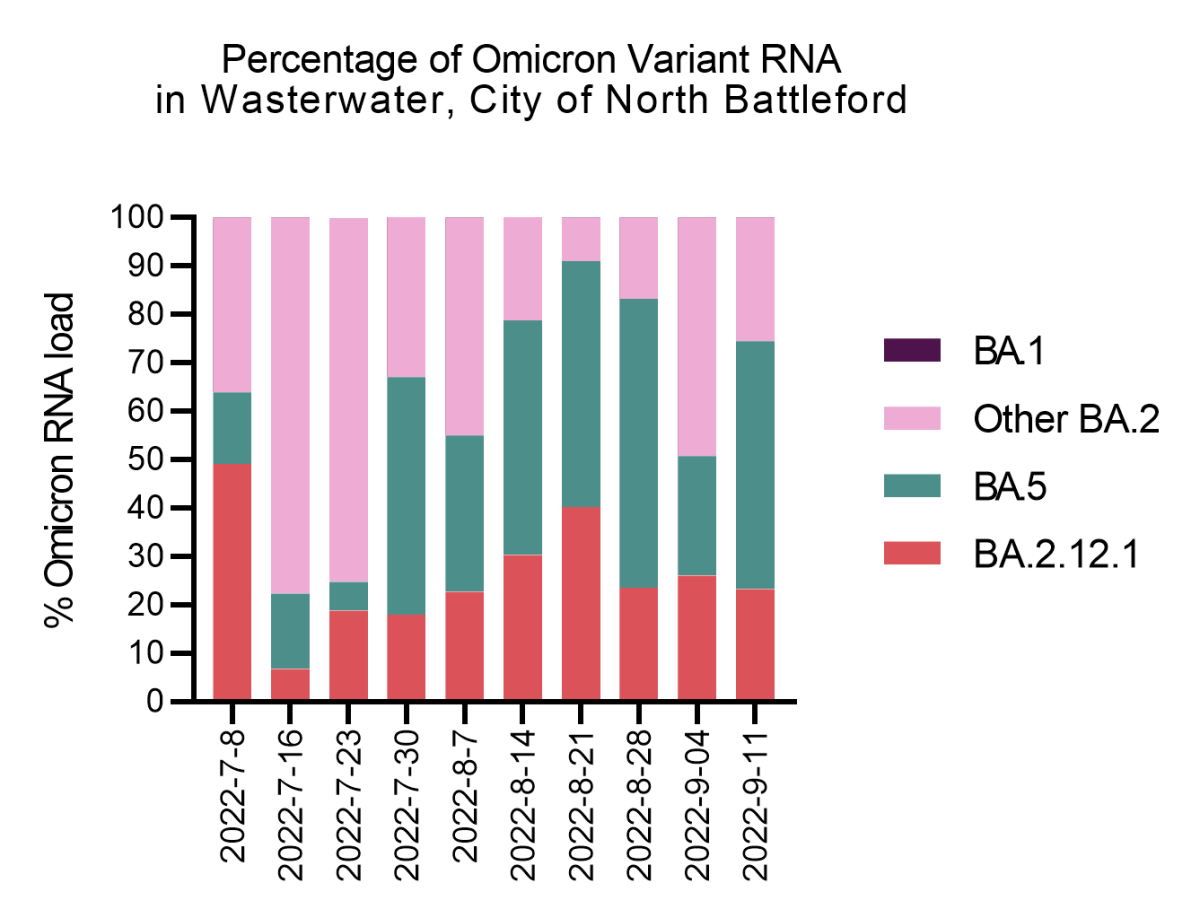


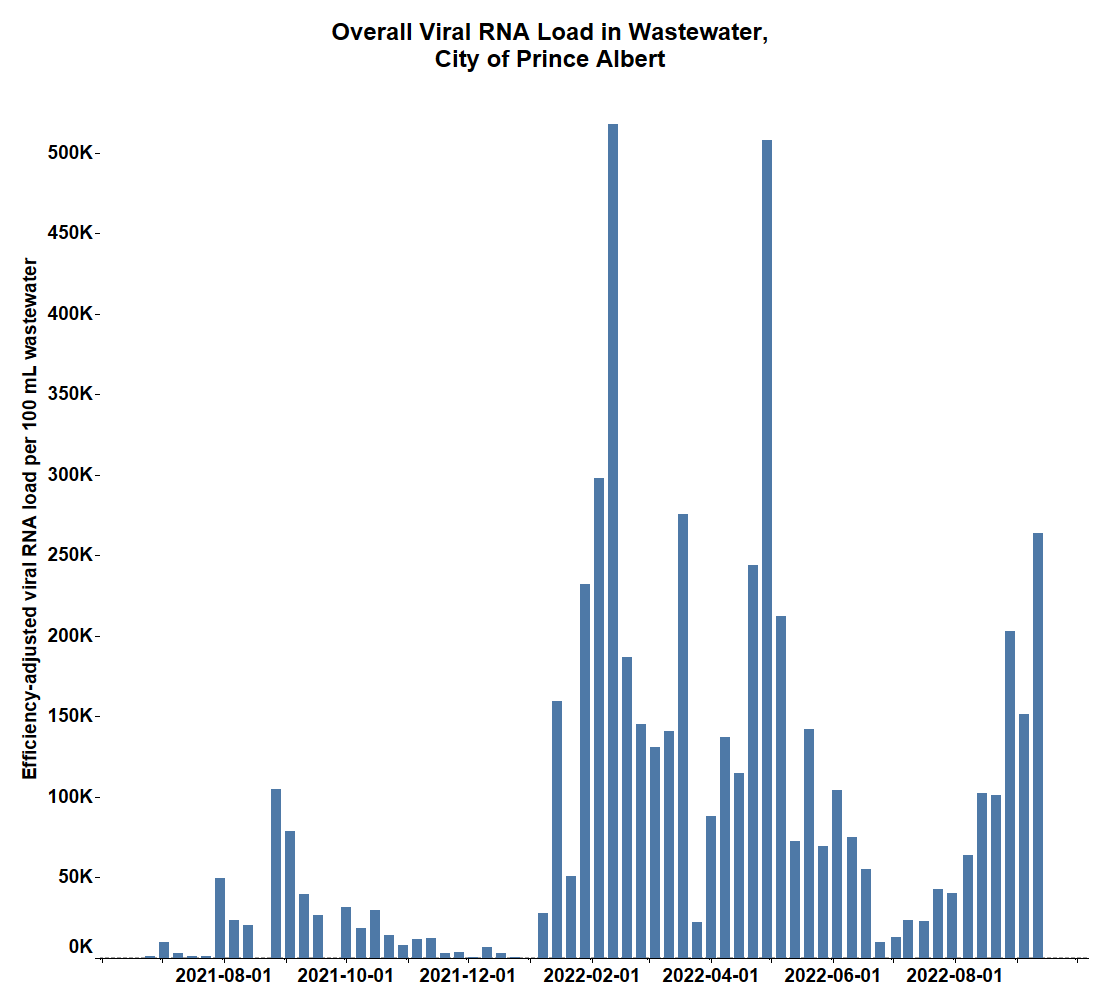
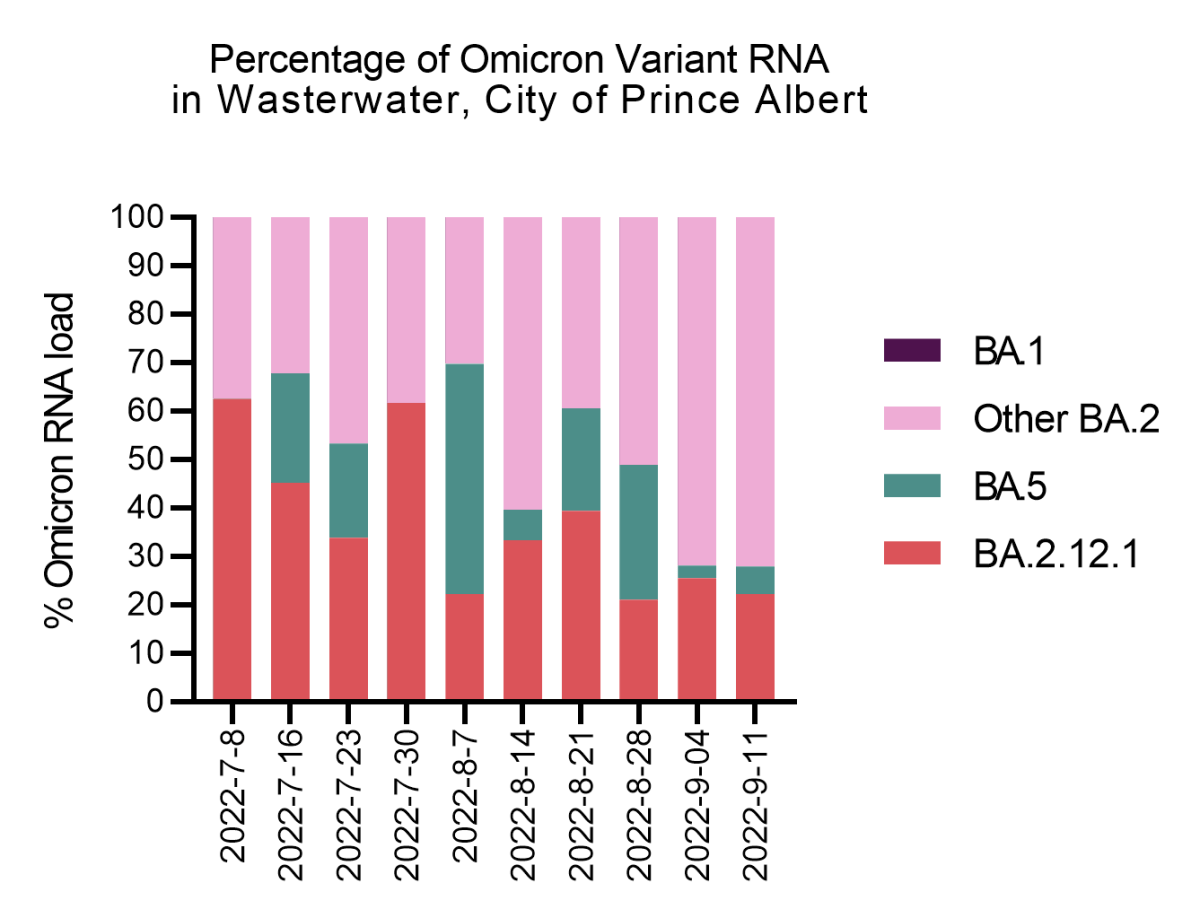







Comments